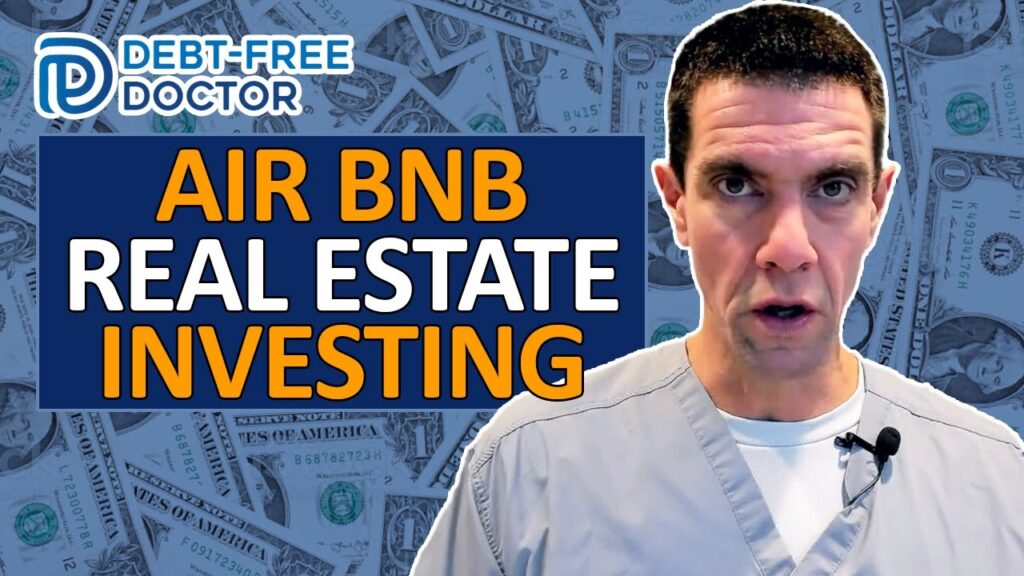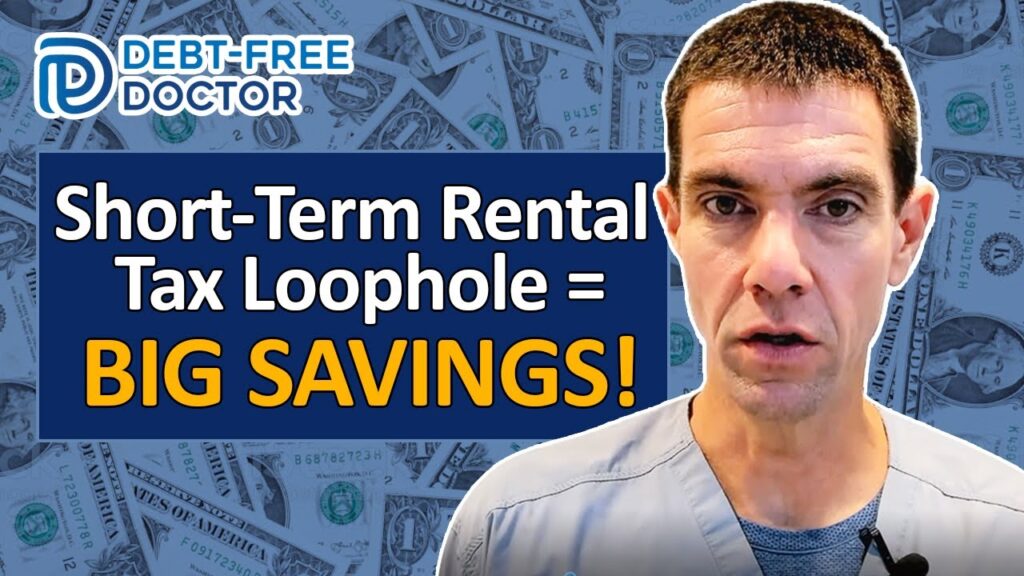What Is A Short Term Rental? Your Guide To Investing
Short-term rentals (STRs) have been gaining popularity lately, especially among people who want flexibility and convenience when they travel or relocate temporarily. A short-term rental, as the name suggests, is exactly what it sounds like. It’s when you rent a house or apartment for a shorter period than the typical one-year lease. We’re talking anywhere from a couple of days to a few months.
One of the key advantages of short-term rentals is the flexibility they offer. Renters who aren’t ready or able to commit to a long-term lease may find these temporary arrangements more suitable for their lifestyle. Additionally, short-term rental properties often come fully furnished, making the move-in process smooth for tenants.
While the rental duration is generally less than a month, some jurisdictions and states may have varying definitions for the maximum length of short-term rental properties. Regardless of those specific parameters, STRs are considered an ideal option for travelers, individuals in transitional periods, or those who want to experience a new area before making a long-term commitment.
Join the Passive Investors CircleWhat Is A Short Term Rental?
Short term rentals come in several different types. Here are the 3 main ones:
#1. Primary Residence
A primary residence short-term rental is when a homeowner rents out a portion of their home or the entire property for short periods. We have a guest house attached to our house and had considered this option in the past.
A primary STR is typically advertised on a rental platform like Airbnb or VRBO. This is an excellent strategy for homeowners to supplement their income while still living on the premises or when they’re away on vacations or business trips.
Advantages of renting primary residences as short-term rentals include:
- Additional income generated from an existing property
- Possibility of tax deductions or exemptions (depending on local laws)
However, it’s essential to be aware of local regulations and restrictions, as some jurisdictions may have specific rules regarding renting out primary residences for short periods.
#2. Second Home
Another type of short-term rental property is a second home. This is where an individual has a separate residential property, specifically purchased or maintained for short-term rental purposes.
Second homes often serve as vacation homes which offer an alternative to hotels for travelers. Some key elements of this investment strategy include:
- Higher rental rates due to the property’s location or amenities (e.g., beach house, ski lodge)
- The potential for increased revenue during peak vacation seasons
Similar to primary residences, it’s crucial to be mindful of local regulations when operating short-term rental investments in second homes.
#3. Investment Property
Short-term rental investment properties are bought or developed to be rented out for shorter stays. These can range from single units, such as apartments or condos, to multi-unit properties like duplexes, triplexes, or even larger apartment buildings.
These investors often focus on maximizing occupancy and revenue. Some characteristics of investment property STRs are:
- Properties purchased or built with the primary goal of generating income
- Professional management, which can include dedicated cleaning and maintenance teams
- Targeting high-demand locations to attract a steady stream of guests
The success of a short-term rental business ultimately depends on the level of care given to selecting, managing, and marketing the property. The bottom line is that you’re in the hospitality business.
Are You Paying Too Much in Taxes?
High-income W-2 earners can legally reduce taxable income using the Short-Term Rental Tax Loophole. This strategy allows real estate investors to offset active income and save thousands in taxes.
✅ Find out how this works for you! Get a FREE consultation here: Click Here
📺 Watch This Video for More Details:
What Short Term Rental Regulations And Permits Are Needed?
Local Laws
Typically, local governments create laws to regulate STRs. These can vary from city to city and are often created to address specific concerns within the community. Some jurisdictions may restrict short-term rentals to certain zones or cap the number of licenses issued. Property owners must comply with these laws to avoid fines. Researching local laws and ordinances is vital in setting up a short-term rental operation.
Short-Term Rental License
A short term rental license, sometimes referred to as a STR permit, is required by many local governments for hosts to operate legally. This ensures property owners adhere to local laws and regulations, such as zoning, safety, and occupancy standards.
Occasionally it involves an annual operating fee or application fee, depending on the area. Some cities may differentiate between hosted and non-hosted stays when setting regulations.
Short Term Rental Application
Applying for a short-term rental license or permit typically involves submitting an application, either online or in-person, to the appropriate local government agency.
Key steps in the application process include:
- Research local laws and any city ordinance to understand the specific requirements for STRs.
- Collect required documentation and information, such as proof of residency or property ownership.
- Complete the application form, making sure all information is accurate.
- Pay any required fees, such as an application fee or annual license fee.
- Submit the application to the appropriate government agency.
Don’t Miss Any Updates. Each week I’ll send you advice on how to reach financial independence with passive income from real estate.
Sign up for my newsletterWhat Are The Different Rental Market Segments?
Target Market
The STR market caters to a diverse target market, including millennials, Generation Z travelers, and families seeking alternative accommodations to traditional hotels. This market has been growing rapidly, fueled by the increasing popularity of platforms like Airbnb.
These groups typically prefer more personalized and unique experiences. They prioritize budget and amenities and are increasingly tech-savvy consumers actively using mobile apps and online booking platforms.
Business Travelers
Business travelers are another significant segment within the short-term rental market. They typically seek short-term rentals for temporary work assignments, conferences, or other professional events. Key factors that influence the choice of accommodation for business travelers include:
- Proximity to their workplace or event venues.
- Availability of essential amenities like Wi-Fi, workspaces, and meeting facilities.
- Flexible booking and cancellation policies.
They can benefit from the flexibility and cost-effectiveness offered by STRs, and the opportunity to stay in more home-like accommodations than traditional hotel rooms.
Transient Guests
Transient guests require temporary lodging for various reasons: relocating to a new city, attending a specific event, or taking a short vacation. There’s been an influx of transient guests within the STR industry, as they appreciate the various types of properties available, from budget options to luxury vacation rentals.
These guests select accommodations based on their affordability, value, amenities such as self-catering facilities, private living spaces, and proximity to points of interest.
Renting and Property Management
STR properties often require a different approach to property management versus long-term rentals.
Owner-Occupied Dwelling
An owner-occupied dwelling is where the owner also lives in the property. This setup can provide many benefits, such as personal interaction with guests for a better experience, easier maintenance as the owner is on-site, and better control over guest behavior.
But this has some challenges, such as limited privacy for the owner and potential face-to-face conflicts.
Residential Zones
Short-term rentals in residential zones can have various restrictions imposed by local regulations, including a specified maximum number of guests, limited days per year that can be rented out, and noise and behavior rules to maintain neighborhood peace.
What About Hiring Management Companies?
Hiring a property management company can be an excellent solution for busy professionals that don’t want to handle the day-to-day operations of STRs. These companies offer a variety of services, including:
- Marketing and listing the property
- Booking guests
- Guest communication throughout their stay
- Handling maintenance and repairs
- Ensuring compliance with local regulations
Occasionally these companies may offer revenue management services that optimize pricing and occupancy rate to maximize the return on investment (ROI).
What Are The STR Fees and Taxes?
It’s important to consider fees charged by the various STR online rental platforms, such as Airbnb and VRBO. In exchange for the fact that they facilitate bookings, manage payments, and provide other critical services for hosts, they charge a percentage of the rental income generated.
The fees can vary by platform, so it’s essential to understand the terms for each and factor those into your profitability calculations.
Let’s face it; we’re taxed on everything these days. Your short-term rental income is also subject to various taxes. Here are three of the most common ones:
#1. Income Tax
If you’re making money from your STR, you’ll need to declare this income when you do your taxes. Your pay depends on your tax rate and any potential tax deductions you might qualify for.
#2. Hotel Occupancy Tax
In some areas, you might need to collect an additional tax from guests who stay in your property, similar to what hotels do. This is often a percentage of the rental price and can differ based on where your property is located.
#3. Transaction Privilege Sales Tax
This tax is calculated based on your rental income (gross rental receipts). The rules for this tax can differ based on where your property is, so look into this to understand your responsibilities.
How To Invest In Short Term Rentals
If you’re considering getting into the short-term rental industry, you must meet a few requirements. Here are the fundamental steps along with the process for beginning a successful STR business.
#1. Set your Goals
Any investment begins with deciding on your goals. So, when it comes to short term rentals, you need to figure out:
- Are you looking for a vacation home and plan to rent it out to cover costs until retirement?
- Or, are you aiming to build a collection of properties to earn money from rent, either as an active or passive investment?
Once you know what you want, you can decide on your next steps. For instance, if you’re looking for a vacation home, find out where you’d like to retire (the mountains!) and start looking for properties in that area. But if your main aim is to invest, search for the best properties in popular locations to get a great return on your investment.
#2. Figure out your Budget
Next, you need to calculate what you can afford. This is a good time to speak with a CPA with real estate experience, like mine.
Usually, you’ll have to put down 20-25% of the property’s price along with money for closing costs, which are about 2-4% of the purchase price.
Don’t forget about other costs too, like:
- Improving or fixing the property
- Upgrading home features like appliances
- Furnishing costs
#3. Research Potential Markets
Now, it’s time to research potential rental markets:
First, find out where short-term rentals are most profitable. Some places have high rents all year round, while others might have high rents only at certain times.
Next, learn about the area’s rules for short-term rentals. Not all areas allow them, so make sure to check.
To help with this, consider hiring a local real estate agent who knows the rules of their area well. Also, look into:
- The process for registering your property
- Any permit fees
- If you need a business license
- If you have to collect any local taxes from guests
Also, try to understand what makes a good investment in the area you’re interested in. Things to consider include average occupancy, daily rates, operating expenses, and the biggest attractions in the area.
Do your own research using websites like Airbnb or VRBO to find out about property taxes, insurance, and rental rates in the area.
#4. Do the Math
It’s important to crunch the numbers in the short-term rental market. Luckily, plenty of resources are available for real-time data such as Airbtics, Vrolio, AirDNA, and Roofstock STR Marketplace. Some key metrics to remember include the average length of stay, cash flow, occupancy, average daily rate, and annualized return. Once you’ve identified some potential properties, it’s time to move on to the next step.
#5. Purchase the Property
As you’re looking for the perfect property, start the financing process and find a lender. Once you’re ready to buy, calculate all the costs, including property taxes, insurance, energy costs, and other fixed expenses. Compare these costs with the rent you’ll likely receive.
#6. Assemble Your Team
You’ll need a team to help you, including an accountant, real estate agent, property managers, and cleaning crew. Suppose you plan to grow your business in the future. In that case, you may also need a lawyer, bookkeeper, personal assistant, and more employees. Having a team of specialists can help you avoid beginner’s mistakes.
#7. Closing the Deal
Once your offer is accepted, you should get an inspection done. If everything is good, your lender will start the loan approval process. The closing is usually handled by a real estate lawyer or a title company, depending on the state’s rules.
After closing, you can immediately take over the property and earn rental income. Make sure that all previous bookings and any deposits have been handed over to you. They should be listed on the closing statement.
By following these steps, you’ll be on your way to successfully investing in short-term rentals.
Want to learn more about how to invest in STRs? Check out this video:
How to Use the Short Term Rental Loophole
The short-term rental (STR) loophole can offer real estate investors significant tax savings. To take full advantage of this strategy, investors should follow several steps to ensure they’re compliant with tax code regulations and maximize their savings.
This is a tax rule found under Reg. Section 1.469-1T(e)(3)(ii)(A), which provides exceptions to what counts as “rental activity”.
According to The Real Estate CPA site, there are six ways rental income can be excluded from being defined as a rental activity, which means it’s not automatically considered as passive income:
- The rental property is used by customers for an average of seven days or less.
- The rental property is used by customers for an average of 30 days or less, and you provide significant services to customers. These services could be similar to what hotels provide, like daily cleaning or meals.
- You provide exceptional services to customers in relation to the rental property, regardless of how long they stay.
- The rental of the property is considered minor compared to other non-rental activities you carry out.
- You typically make the property available for non-exclusive use by various customers during specific business hours.
- If you own a share in a partnership, S corporation, or joint venture that conducts an activity, providing the property for use in this activity isn’t considered a rental activity.
Here are the steps to use the loophole in simple terms:
1. Purchase a short-term rental.
2. Materially participate in the rental.
3. Carry out a cost segregation study.
4. Take advantage of accelerated depreciation in the first year.
5. Report paper losses from your business.
6. Hire a real estate CPA who understands this loophole.
If you want more information about using the STR tax loophole, check out this video:
Challenges and Opportunities
Residential Neighborhoods
The fast growth of short-term rentals has resulted in both opportunities and challenges for residential neighborhoods. On one hand, STRs can boost local economies by attracting tourists and generating revenue for homeowners.
On the other hand, they may also cause some challenges in residential areas.
Opportunities:
-
- Increased tourism and economic growth
- Supplemental income for homeowners
- Potential to improve property values
Challenges:
-
- Strain on neighborhood infrastructure and resources
- Increased noise and potential security concerns
- Decreased long-term rental availability for local residents
Owner-Occupied Versus Non-Owner Occupied Short Term Rentals
A key distinction in the world of residential real estate investments and short-term rentals is between owner-occupied and non-owner occupied properties. This distinction presents unique challenges and opportunities for both individual homeowners and real estate investors.
Owner-Occupied Properties
These are properties where the owner lives on-site and rents out a portion of their home for short-term stays. The advantages of owner-occupied STRs typically include:
- Direct oversight and control of guests and property maintenance
- Potential for personal interaction and enhanced guest experiences
- Compliance with some local regulations that favor owner-occupied STRs
However, there may be limitations and challenges, such as:
- Sharing personal living space with guests
- Balancing privacy and guest interaction
- Possible restrictions placed by homeowners’ associations (HOAs) or local regulations
Non-Owner Occupied Properties
These are properties solely dedicated to short-term rentals and are managed remotely by the owner or a property management company. Advantages of non-owner occupied STRs often include:
- Higher revenue potential through full-time rental availability
- Increased flexibility for real estate investors
- Opportunity for professional management services
But non-owner occupied STRs face potential downsides, such as:
- Local regulations, taxes, or bans targeting non-owner occupied rentals
- Higher upfront costs and ongoing maintenance expenses
- Increased likelihood of neighborhood opposition
Ready To Invest In STRs?
If you’re a busy professional (like me) that doesn’t want to deal with tenants yet wants to reap the benefits of real estate investing in short term rentals then join the Passive Investors Circle group today (accredited investors only).









